External links
- God is Red at the Internet Archive
- God Is Red: A Native View of Religion, on Google Books
God is Red: A Native View of Religion, by Vine Deloria, Jr. (Standing Rock Sioux), is a nonfiction book that discusses traditional Native American religious views, particularly their relation to Western Christianity. [1] It also details the hardships faced by Native Americans as their country was quickly flooded with foreigners eager for land and other resources. Deloria links the anthropocentrism of Christian orthodoxy and subsequent American economic philosophies with increasing environmental upheaval. Deloria also explains how religious views are rooted to "place" as opposed to being universal. [1]
The book was first published in 1973, then 1992, and 2003. [1]
Agnosticism is the view or belief that the existence of God, the divine, or the supernatural is either unknowable in principle or currently unknown in fact. It can also mean an apathy towards such religious belief and refer to personal limitations rather than a worldview. Another definition provided is the view that "human reason is incapable of providing sufficient rational grounds to justify either the belief that God exists or the belief that God does not exist."

Mormonism is the theology and religious tradition of the Latter Day Saint movement of Restorationist Christianity started by Joseph Smith in Western New York in the 1820s and 1830s. As a label, Mormonism has been applied to various aspects of the Latter Day Saint movement, although since 2018 there has been a push from The Church of Jesus Christ of Latter-Day Saints to distance themselves from this label. A historian, Sydney E. Ahlstrom, wrote in 1982 that, depending on the context, the term Mormonism could refer to “a sect, a mystery cult, a new religion, a church, a people, a nation, or an American subculture; indeed, at different times and places it is all of these."
Philosophy of religion is "the philosophical examination of the central themes and concepts involved in religious traditions". Philosophical discussions on such topics date from ancient times, and appear in the earliest known texts concerning philosophy. The field is related to many other branches of philosophy, including metaphysics, epistemology, logic and ethics.

The relationship between religion and science involves discussions that interconnect the study of the natural world, history, philosophy, and theology. Even though the ancient and medieval worlds did not have conceptions resembling the modern understandings of "science" or of "religion", certain elements of modern ideas on the subject recur throughout history. The pair-structured phrases "religion and science" and "science and religion" first emerged in the literature during the 19th century. This coincided with the refining of "science" and of "religion" as distinct concepts in the preceding few centuries—partly due to professionalization of the sciences, the Protestant Reformation, colonization, and globalization. Since then the relationship between science and religion has been characterized in terms of "conflict", "harmony", "complexity", and "mutual independence", among others.
Universalism is the philosophical and theological concept that some ideas have universal application or applicability.
Psychology of religion consists of the application of psychological methods and interpretive frameworks to the diverse contents of religious traditions as well as to both religious and irreligious individuals. The various methods and frameworks can be summarized according to the classic distinction between the natural-scientific and human-scientific approaches. The first cluster amounts to objective, quantitative, and preferably experimental procedures for testing hypotheses about causal connections among the objects of one's study. In contrast, the human-scientific approach accesses the human world of experience using qualitative, phenomenological, and interpretive methods. This approach aims to discern meaningful, rather than causal, connections among the phenomena one seeks to understand.
Religion in the United States is widespread and diverse, with the country being far more religious than other wealthy Western nations. An overwhelming majority of Americans believe in a higher power, engage in spiritual practices, and consider themselves religious or spiritual. Christianity is the most widely professed religion, with the majority of Americans being Evangelicals, Mainline Protestants, or Catholics.
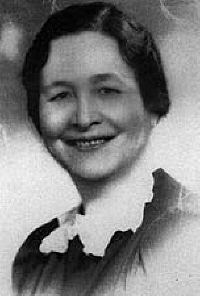
Ella Cara Deloria, also called Aŋpétu Wašté Wiŋ, was a Yankton Dakota (Sioux) educator, anthropologist, ethnographer, linguist, and novelist. She recorded Native American oral history and contributed to the study of Native American languages. According to Cotera (2008), Deloria was "a pre-eminent expert on Dakota/Lakota/Nakota cultural religious, and linguistic practices." In the 1940s, Deloria wrote a novel titled Waterlily, which was published in 1988, and republished in 2009.
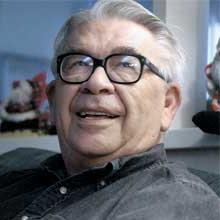
Vine Victor Deloria Jr. was an author, theologian, historian, and activist for Native American rights. He was widely known for his book Custer Died for Your Sins: An Indian Manifesto (1969), which helped attract national attention to Native American issues in the same year as the Alcatraz-Red Power Movement. From 1964 to 1967, he served as executive director of the National Congress of American Indians, increasing its membership of tribes from 19 to 156. Beginning in 1977, he was a board member of the National Museum of the American Indian, which now has buildings in both New York City and in Washington, DC, on the Mall.

Religious naturalism is a framework for religious orientation in which a naturalist worldview is used to respond to types of questions and aspirations that are parts of many religions. It has been described as "a perspective that finds religious meaning in the natural world."
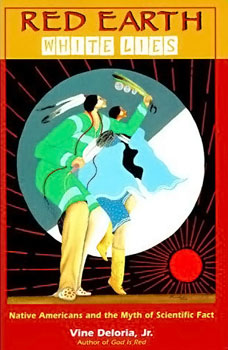
Red Earth, White Lies: Native Americans and the Myth of Scientific Fact is a book by Native American author Vine Deloria, originally published in 1995. The book's central theme is to criticize the scientific consensus which has, in his words, created "a largely fictional scenario describing prehistoric North America".

Breaking the Spell: Religion as a Natural Phenomenon is a 2006 book by American philosopher and cognitive scientist Daniel Dennett, in which the author argues that religion is in need of scientific analysis so that its nature and future may be better understood. The "spell" that requires "breaking" is not religious belief itself but the belief that it is off-limits to or beyond scientific inquiry.
The term Urmonotheismus or "primitive monotheism" expresses the hypothesis of a monotheistic Urreligion, from which polytheistic religions allegedly degenerated. This evolutionary view of religious development contrasts diametrically with another evolutionary view on the development of religious thought: the hypothesis that religion progressed from simple forms to complex: first pre-animism, then animism, totemism, polytheism, and finally monotheism.
Atheism, in the broadest sense, is an absence of belief in the existence of deities. Less broadly, atheism is a rejection of the belief that any deities exist. In an even narrower sense, atheism is specifically the position that there are no deities. Atheism is contrasted with theism, which in its most general form is the belief that at least one deity exists.
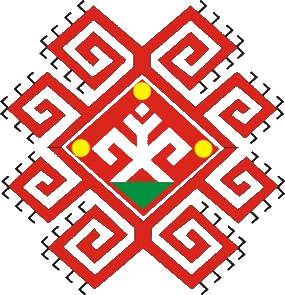
The Mari religion, also known as Mari paganism, is the ethnic religion of the Mari people, a Volga Finnic ethnic group based in the republic of Mari El, in Russia. The religion has undergone changes over time, particularly under the influence of neighbouring monotheisms. In the last few decades, while keeping its traditional features in the countryside, an organised Neopagan-kind revival has taken place.

The Native American Church (NAC), also known as Peyotism and Peyote Religion, is a syncretic Native American religion that teaches a combination of traditional Native American beliefs and elements of Christianity, especially pertaining to the Ten Commandments, with sacramental use of the entheogen peyote. The religion originated in the Oklahoma Territory (1890–1907) in the late nineteenth century, after peyote was introduced to the southern Great Plains from Mexico. Today it is the most widespread indigenous religion among Native Americans in the United States, Canada, and Mexico, with an estimated 300,000 adherents.
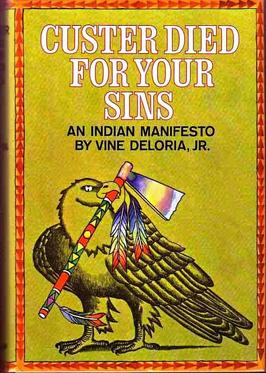
Custer Died for Your Sins: An Indian Manifesto is a 1969 non-fiction book by the lawyer, professor and writer Vine Deloria, Jr. The book was noteworthy for its relevance to the Alcatraz-Red Power Movement and other activist organizations, such as the American Indian Movement, which was beginning to expand. Deloria's book encouraged better use of federal funds aimed at helping Native Americans. Vine Deloria, Jr. presents Native Americans in a humorous light, devoting an entire chapter to Native American humor. Custer Died for Your Sins was significant in its presentation of Native Americans as a people who were able to retain their tribal society and morality, while existing in the modern world.

Playing Indian is a 1998 nonfiction book by Philip J. Deloria, which explores the history of the conflicted relationship white America has with Native American peoples. It explores the common historical and contemporary societal pattern of non-Natives simultaneously mimicking stereotypical ideas and imagery of "Indians" and "Indianness", in a quest for National identity in particular, while also denigrating, dismissing, and making invisible real, contemporary Indian people.
The secular movement refers to a social and political trend in the United States, beginning in the early years of the 20th century, with the founding of the American Association for the Advancement of Atheism in 1925 and the American Humanist Association in 1941, in which atheists, agnostics, secular humanists, freethinkers, and other nonreligious and nontheistic Americans have grown in both numbers and visibility. There has been a sharp increase in the number of Americans who identify as religiously unaffiliated, from under 10 percent in the 1990s to 20 percent in 2013. The trend is especially pronounced among young people, with about one in three Americans younger than 30 identifying as religiously unaffiliated, a figure that has nearly tripled since the 1990s.
Inés M. Talamantez was an ethnographer and scholar of religion. She was professor of religious studies at University of California, Santa Barbara (UCSB). She was an expert on Native American religion and philosophy.